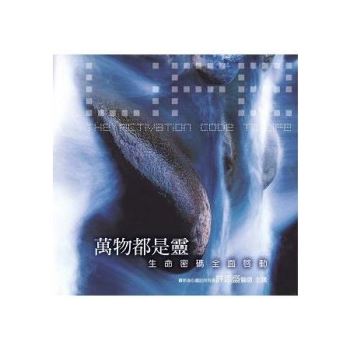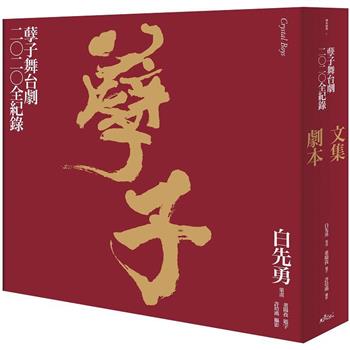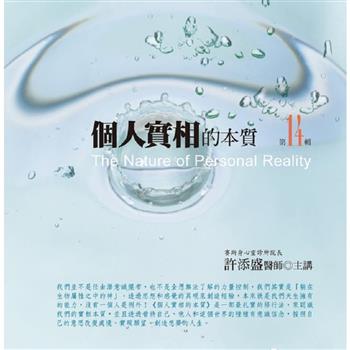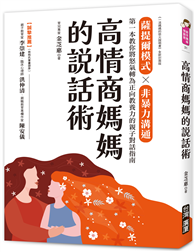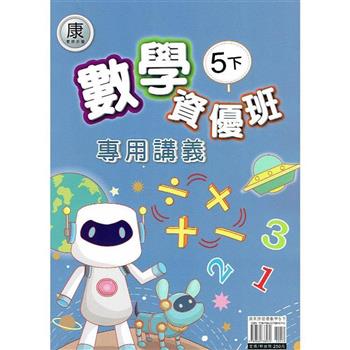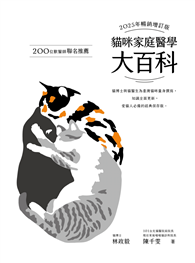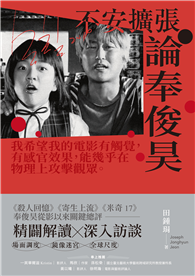圖書名稱:For Buddhism, For Sentient Beings
Introduction
The Straight Path of Bodhi and the Translucent Sphere of Lazuli
In the forty-nine years of the Buddha’s lectures, he first gave a wide range of expedient dharma teachings, in order to use the water of the Dharma to cleanse sentient beings of their delusion and worries. After forty-two years of teaching expedient Dharma, he turned to lecture “The Lotus Sutra (Threefold Lotus Sutra)” in order to teach the Bodhisattva Dharma, pointing out the true meaning of the Bodhisattva’s heart and actions as the foundation of Buddhahood. The Lotus Sutra (Threefold Lotus Sutra) consists of The Sutra of Innumerable Meanings, The Sutra of the Lotus Flower of the Wonderful Law, and The Sutra of Meditation on the Bodhisattva Universal Virtue. Within these, the essence lies in The Sutra of Innumerable Meanings, where it instructs sentient beings to study the virtues and to understand the state of mind of the Buddhas and Bodhisattvas, and details the incomparable good deeds manifested by the Great Vow.
For over 55 years, under the leadership of Dharma Master Cheng Yen, the members of Tzu Chi have followed the teachings of “The Sutra of Innumerable Meanings” to hear the voices of the people who are suffering, to help them realize enlightenment, to observe deeply and practice widely, to benefit all sentient beings, and promote the Four Missions all around the mundane world. At a time when the human mind is perverted, the world is in chaos, the environment is being destroyed, the climate is changing, the resources are being depleted, and the ecology is unbalanced. Where war is frequent, epidemics are rampant, and the survival and civilization of mankind are facing serious crisis, it is the mission of Tzu Chi to inspire the altruistic mind of people, to promote pure love, and to spread the true meaning of Buddhism to the people. In accordance with the teaching of the Dharma Master Cheng Yen that “the Buddha’s teachings should be life-oriented and the Bodhisattva should be humanized,” the sign language musical “Purity, Great Love, Innumerable Meanings,” interpreted from the classics of “The Sutra of Innumerable Meanings,” was premiered at the Tzu Chi 41st Anniversary Conference in 2007 at Hualien’s Jing Si Hall, followed by a touring performance at home and abroad. This allowed the public to understand the expedient Dharma teachings through audiovisuals and to realize the auspiciousness of the Dharma meaning, and to receive the nourishment of the Dharma rain, and the blessing of the Dharma medicine, so as to enlighten one’s heart and purify the body. Practicing the dharma teachings to purify the hearts of people, harmonize the society and pray for the elimination of disasters in the world.
As the author of this book, I was fortunate to participate in eight performances of the play. During the rehearsals, I was first struck by the flow of the lyrics, the majesty of the momentum, the boundless profound spirit of the Dharma. Gradually, I was able to delve deeper into the meaning of sutra, understand the integration of the sutra and musical, and absorb the meanings of the sutra and thus realizing the Buddha is really the Great Enlightened One of the universe, the One who speaks as he does, the One who speaks truthfully, and the One who does not lie. In the verses of The Sutra of Innumerable Meanings, it explains, “Infinity originates from one” and “One begets infinity, and infinity originates from one” as the true cosmic reality and state of life. What may have seemed unbelievable and absurd at that time, after 2,500 years of time and evolution, has proven to be very much in line with modern astronomy, cosmology, physics, relativity, quantum theory, evolution, biology, chemistry, and medicine, and the direction of practice directed by the Buddha is also the correct path to final emancipation. What is even more admirable is that Dharma Master Cheng Yen has followed the teachings of Venerable Master Yin Shun of “for Buddhism, for sentient beings,” and has continued to practice the teachings of “The Sutra of Innumerable Meanings” thoroughly, encouraging her disciples to apply their vital energies to practice the spirit of compassion and great love, and practice the human realm Bodhisattva path through the concrete actions of the Four Missions and Eight Endeavors. Not only does he open the Buddha’s vision for sentient beings, show the Buddha’s vision, realize the Buddha’s vision, and enter the Buddha’s vision, but also practices the Buddha’s vision. Moved by the Master, the author of this book published One Seed to Infinite in 2009, with the aim of presenting the modern interpretation of The Sutra of Innumerable Meanings.
The “Prelude” of “Purity, Great Love, and Innumerable Meanings” states, “Vast is the universe, life comes and goes, such is life’s natural course, no need to be astounded. Contemplate upon this carefully with a tranquil mind, we begin to realize life is impermanent and transient, the life of today can change bringing a different tomorrow.” It combines and interprets the magnificence, and vastness of the universe, and the sorrows and joys of life perfectly. In response to this prelude, the Dharma Master Cheng Yen said, “Every flower, grass, and tree in the world is constantly undergoing metamorphosis. Everything is originally nothing; existence is created through the conditions of convergent cause and predestined effect. All things are formed from predestinations. They are born from each other, following the principle of complementary and interdependency of everything in the universe and they are constantly going through the natural cycle of forming, living, falling and vanishing.” This is an excellent interpretation of the reality of the universe and natural phenomena stated in the verses “all actions are impermanent” and “all Dharmas have no self” in “The Three Universal Truths.” Emptiness is not nothingness, but all possibilities. The ultimate reality is “emptiness,” but cannot exist apart from the phenomena of “existence.” Schrödinger, a master of quantum mechanics, proved that both light and particles have wave-particle duality, and when we observe them, they will be concentrated at one point and appear as particles, but when they are not observed, they will expand in space in the form of waves. Particles are not constant entities, but transient phenomena that are sometimes linked together to create the illusion of an eternal body.
The starting phrase of the Virtues Chapter is “Bodhisattvas are wise beings with great compassion, their minds are tranquil, ever-abiding in meditation, peaceful, free of desires and are immune from any kind of delusion or wrong thoughts” “Eternal Stillness,” which is in line with “The Three Universal Truths,” states, to practice according to the Dharma is to train the mind, to transcend the realm of “all actions are impermanent” and “all Dharma has no self,” and to enter the profound dharma realm of “no birth, no death, no constant, no difference, no coming and no going” (emptiness), and to realize the eternal truth of “permanence, bliss, true self, purity,” based on the impermanence from birth to death. The statement, “our mind is clear and translucent, and our vows are as vast as the endless void, and conviction is unwavering for countless eons” is the realization of the “meaning of righteousness” (or the true meaning) from the “permanence, bliss, true self, purity,” which refers to the absolute truth of the ultimate reality. The “innumerable dharma paths, all of which become clear to us, and the attainment of great wisdom and penetrating the true nature of all things” is the realization of the “secular meaning” (or the worldly meaning) from the mundane world, which refers to the relative truth of the mundane world. The ultimate truth and the worldly truth are two truths that are two sides of one coin. The former is to investigate the truth of things from the perspective of the ultimate, while the latter is to gain insight into the interdependent phenomena of the mundane world from the perspective of the relative truth. “Jing Si” is a profound observation of the Dharma lineage with the essence of Prajñā (the ultimate meaning) as the body, while “Tzu Chi” is a wide practice of the sect with the essence of great compassion without attachments (the worldly meaning) as the application. Jing Si and Tzu Chi can be said to be the perfect combination of Weber’s social concept of value-rational and instrumental action.
The integration of the absolute and relative truths, that is, the fusion of emptiness and wisdom, is the so-called buddha nature or Tathāgata nature, the essence of the Buddhahood. All sentient beings have the potential to become Buddhas, but they are unable to manifest it due to delusion. Here are four kinds of sentient beings: namely, there are those born from eggs, those born from wombs, those born from moisture, those born of transformation, and there are also differences between those with form, those without form, those with thought, and those without thought. From each “condition” (effect) formed by the “cause” of each, the “realm” (karma) is created, and the cause is stored to recycle back to the cause of the reincarnation. From there, it explains the “condition” to create “karma,” which then returns the cycle back to “cause.” Buddhism widely explains the various phenomena of birth and death in the universe and in life, as well as the principles of karma and retribution, guiding sentient beings to follow and harness these principles to improve oneself, transform their external environment, create good karma, and create a sustainable civilization. It is paradoxical that at a time when increasingly sophisticated science is proving the profound subtlety and vastness of the Buddha’s teachings, many Buddhist sutras are being misinterpreted, misunderstood, and misrepresented, resulting in distortions and misrepresentations that do not reflect the Buddha’s original intent. True Mahāyāna Buddhism is active in the world. If a society is without right and wrong, without justice, without order and without compassion and if it only adapts to the external surroundings through internal dharma practice, it is not only the degradation of human beings, but also the incompetence of religion.
Things often have unexpected and unimaginable outcome. For example, when the silkworms spit out silk, they never thought they would create the Silk Road. As the same for the Dharma Master, when she fled her home, she never thought she would create a global Tzu Chi family. Tzu Chi started with just the Master, from one thought, one life of boundless compassion and now fifty-five years later, its footprints have spanned across five continents, four oceans, and over one hundred countries. Believing in people’s love and people’s selflessness, the Dharma Master’s heart gives boundless acceptance, and never wavers or change in his fortitude and seizes time and lets no second slip by. Treating each second like the last second, as the start of a new second, and when it passes, one tiny barrier is overcome, allowing each new obstacle to be tackled. The author has followed the Dharma Master’s teaching for 30 years and feels that the Master has been “mindfulness of the body,” “mindfulness of emotions,” “mindfulness of the mind,” and “mindfulness of the dharma,” and follows that “one’s mind should not abide anywhere,” as stated in The Diamond Sutra (Vajracchedikā Prajñāpāramitā Sūtra), “One who practices charity (dāna) without any attachments, is like a man with open eyes, who can see everything in the sunshine” and that’s fundamentally how the world of Tzu Chi becomes one on which the sun never sets. The secret to the success in normal business organizations is to have the right people, do the right thing, and do the thing right. The Master’s vow is to help and transform all sentient beings with compassion, taken across sentient beings universally. Using Nature as an example, he will not abandon the small streams or the tiny water drops, hoping that even those who are not the right people can become the right people and join the sea of Buddhist merit. It’s not easy for a Buddhist monk to push a person “one inch” closer to Buddhahood and likewise, the leadership of a volunteer force is far more challenging than that of a business enterprise. The self-oriented state of mind of a Hīnayāna (Smaller Vehicle) disciple is, “the lonely smoke of the desert is straight, the sunset of the Yangtze River is round,” while the compassionate vow of a Mahāyāna (Greater Vehicle) disciple is “the Straight Path of Bodhi and the Translucent Sphere of Lazuli.” The Dharma Master can be said to be a great leader who has the ability to take sentient beings to places where they do not necessarily want to go, but where they should be, from one being to the next, so that the will of all can transform the vision of truth. She leads the people of Tzu Chi from all around the world to follow the teachings of the Chapters of Virtue, Expounding (preaching) the Dharma, and Ten Merits of The Sutra of Innumerable Meanings and to practice infinite righteousness in the Sahā world.
The finale of the musical, “Purity, Great Love, Innumerable Meanings,” states, “We see that all life will come to an end, as coming together and parting is the way of nature, and a thousand-year-old pine will grow old, while still standing up to the wind and rain.” The power of kindness in us is unlimited, boundless. The power of Dharma can affect marvelous things. Our vows and perseverance can create miracles and faith will give us courage to realize our aspirations. Turn the spark of inspiration into lasting Great Love. We can bring joy and benefit to all living beings and pass on the light of wisdom. Compassion is continuously being born in the universe, and kindness and goodness will open up to us a different path. With Great Love and immeasurable compassion, with a tranquil mind of purity, unwavering vows and reverence for the law, we shall practice the Bodhisattva Way in Jambudviipa. Here “Jambudviipa” in Buddhist sutras refers to our current planet.
Life from birth to death on the surface is an overlap of physiological actions and consciousness during the lifespan, but in reality it is a reorganization of the fundamental particles and atoms of the “dust” of the universe over tens of billions of years, as well as the memory of the Earth’s biological history, recorded in DNA for nearly 4 billion years. After passing away, the physical body will disintegrate and return to the “lifeless” matter of the universe, without coming or going, without birth or death. Life is very difficult and extremely precious. As “man is the soul of the universe,” we must think about the four questions of human life: “Why do we live?” (the purpose of life), “Why are we born as human beings?” (the essence of life), “What is life?” (the phenomenon of life), and “Why live?” (the meaning of life)
The power of human learning and creativity has led to technological progress and material civilization, allowing for the maximization of the productivity of goods and services. Our political systems and economic systems are designed to endlessly expand human desires and exploit the Earth’s resources indefinitely. The cost of such a successful model is environmental collapse, disaster, wealth inequality, war, pestilence, and refugees, and the Mother Earth we depend on becoming unrecognizable and overburdened. Today’s material civilization is built on multiple connections of globalization, technology, industrialization, and division of labor. However, these connections are very fragile and unstable, and once the environment changes or mutual trust disappears, the advantageous system can take a sharp turn for the worse, becoming uncontrollable and irreversible. Only by unlocking the wisdom and compassion of each individual, by developing the perseverance and courage of each individual, can we turn the tide and create the opportunity for sustainable human development. We must completely change the ecology and mentality of production and consumption from a habit of over-consumption of materials and energy to a simpler life with less desire and more contentment, and we must also have a more long-term consensus to eliminate the flaws hidden in the system that are not conducive to sustainable development. During the “bad times” and “end of times,” the Master constantly reminds us that, “In this great era of ours, we must know right from wrong. In times of great disaster, we must nurture great compassion. In times of great delusion, we must give rise to great wisdom. In times of great turmoil, we must practice great repentance.”
Mahāyāna Buddhism is the unification of “mind” and “matter” centered on “mind.” From the vast universe to the smallest particle of dust, all are “concrete laws of dharmas” that are “manifested by the mind alone.” In 2003, at Jing Si Hall, Dharma Master Yin Shun encouraged the Tzu Chi people, “Meditate on all the Buddhas of the entire universe and understand that all matter is created by the mind alone.” When the old monk first saw the mountain as a mountain, he saw the false appearance of “conditions,” that is, “illusion appears from the consciousness.” When he saw the mountain as a mountain, he realized the empty appearance of “emptiness” as “emptiness is only name.” When he saw the mountain as a mountain, he realized the truth of “all things arise from conditions, but are empty in nature” and the only “true and constant is the mind.” This book was written in February of 2020 and was finished on May 10 of the same year, the Buddha’s Birthday, which was exactly 100 days in duration. It was also the author’s 100 days of “mindfulness,” where he learned and understood more about the wisdom of Buddhism and Tzu Chi’s deep vision and wide practice. The author was born in the postwar baby boom, and has lived through the agricultural, industrial, knowledge, and information eras, as well as through the time of Martial Law, lifting of Martial Law, the Cold War, and the Post-Cold War era. He has followed in the footsteps of the Dharma Master for over thirty years. Although limited in ability and space, this book hopes to describe briefly in the Dharma Master’s compassionate vow to do everything in his life, “for Buddhism and for all sentient beings,” and to lead people of Tzu Chi to practice compassion to heal the world.
It was also during these 100 days that the coronavirus was spreading and “infecting” the world. The microscopic nano-virus was able to “parasitize,” causing humans who believe themselves to be “the soul of the universe” to lockdown entire cities and countries. It is a reminder that human beings must understand their limitations and fragility, respect life more, face heaven and earth with humility, and be more reverent to nature. However, when Taiwan and the world faced various natural and man-made disasters, Tzu Chi bodhisattvas, in their blue and white uniforms, immediately descended from the sky and emerged from the earth, being the first and staying until the last. This has become their routine as volunteers and “doing what is expected” has become their standard. If you breathe well, you will forget the existence of breathing, and if your shoes fit, you will forget the existence of shoes. When looking at the Six Missions of Tzu Chi, it is a culmination of many people’s infinite vows to volunteer, both financially and physically, without any complaints on one’s own initiative. There is “seeing confusion (illusion)” and “thinking confusion (temptation)” for common people, and “dust (miniscule) confusion” for bodhisattvas. The Dharma Master always encourages the disciples to face adversity and frustration without anger or depression, and to learn patience in the face of humiliating words and have an unwavering heart when faced with wind and storm. The world is a place of cultivation. We must put equal emphasis on interpretation and action, the integration of the governing principles, and the dual operation of compassion and wisdom, it is as the saying states, “on the top of a hundred-foot pole, keep on progressing. Then, the ten directions of the Universe become clear.”
A Western scholar who visited Tzu Chi was so moved that he wanted me to use one word to describe Tzu Chi. The word I gave him was “Nowhere,” which I separated into two levels of meaning. The words, “Now here,” can mean “in the present moment, the body is empty,” expressing the deep view of the Jing Si Dharma lineage, and “Nowhere” can also mean “being ubiquitous, being endless,” expressing the extensive practice of the Tzu Chi sect of Buddhism. Tzu Chi’s assistance in the Japanese Tohoku Earthquake impressed Ida’s Laboratory at Kyoto University. They were so moved by the altruistic compassion of a Buddhist group and its compassionate commitment to the world as well as the power of organization and mobilization, that they sent a research team to cover the event. Before leaving, they gave me a letter from Kyoto University, asking me to write down “What is Tzu Chi?” as a basis for their team’s research. I wrote “Tzu Chi: Compassionate Relief for the World” and defined it with four “lifetimes:” “A lifetime of immeasurable compassion, a lifetime of hearing and practicing all the teachings, a lifetime of unwavering faith, and a lifetime journey without regrets.” “Transmitting the Jing Si Dharma Lineage, Advancing the Tzu Chi School of Buddhism,” we are grateful for the compassion and wisdom of Dharma Master Cheng Yen and all the Tzu Chi people around the world, who uphold the principle, “for Buddhism and for all sentient beings,” to make this book possible.
The six chapters of this book describe how Tzu Chi’s four main missions of charity, health care, education, and culture & communication, as well as the practice of Buddhist teachings and scriptures in the world of today’s sentient beings, are being carried out through the practice of the sacrifice and charity and environmental protection. The writer is not vastly knowledgeable in Buddhism, nor is he a sociologist, and thus, if there are any inadequacies or omissions, we hope for all the knowledgeable advisors to advise and correct.
【作者簡介】
Wang Pen-Jung M.D, Ph.D
Year of Birth 1951
Current position:
Chief executive Officer, Tzu Chi Education Foundation
President Emeritus / Professor, Tzu Chi University
Previously served as:
President, Tzu Chi University
Dean of the College of Medicine, Tzu Chi University
Chair of the School of Medicine, Tzu Chi University
Director of the Department of Pediatrics, Tzu Chi Medical Center
Physician of the Department of Pediatrics, National Taiwan University Hospital and Tokyo Women’s Medical University, Japan
Postdoctoral Researcher, National Epilepsy Center, Japan
The author of One Seed to Infinite, The Opposite of the Opposite, Nothing to Everything, and Brain Microbiota and Intestine, etc.

